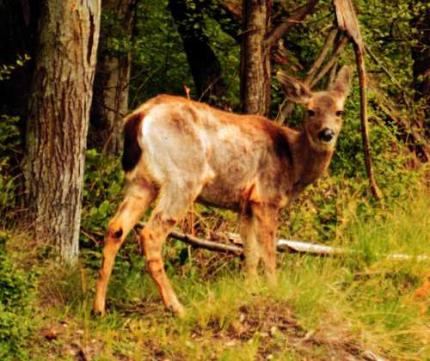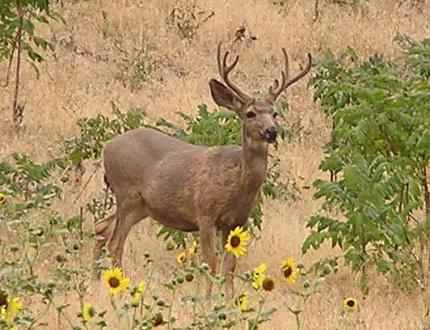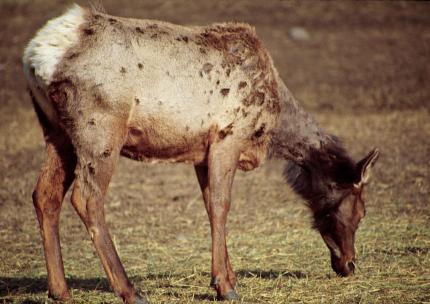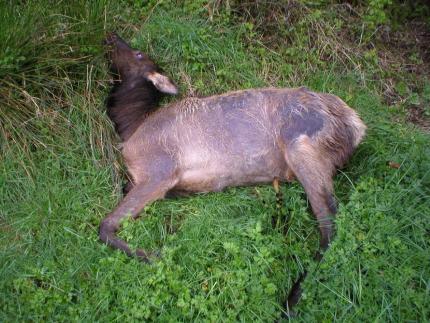
Hair loss syndrome (HLS) of black-tailed deer is caused by a heavy infestation of Eurasian lice first reported in Western Washington in 1995.
The normal hosts of these lice are European and Asian deer and antelope, which are not seriously affected by them. In contrast, when black-tailed deer become infested, they tend to develop a hypersensitivity (severe allergic) reaction, which causes skin irritation and excessive grooming by the deer. Eventually, this excessive grooming leads to loss of the guard hairs, leaving yellow or white patches along the sides.
Distribution and spread
Infestations are heaviest during late winter and early spring. The geographical distribution of HLS has expanded steadily since its first appearance and now affects black-tailed deer throughout their range in Western Washington and western Oregon. This species of lice, in the genus Damalinia (Cervicola) sp., has also been found on elk in Washington, but does not result in the severe hair loss seen in deer.
The Washington Department of Fish and Wildlife began to receive reports in 2003 of deer from the Yakima area of south-central Washington -- in the eastern foothills of the Cascade Range -- with clinical signs similar to HLS. These were the first reports of apparent HLS in Eastern Washington.
The exotic lice species described above does not affect humans or domestic animals.
Deer in captive settings have been successfully cleared of lice infestations with the use of medication, but there is no practical method for delivering effective doses of medication to large populations of wild, free-ranging deer.
Other hair loss conditions seen in deer, elk, and moose

Normal molt
Deer, elk, and moose normally shed their hair, or “molt”, twice per year. They shed their winter coat in the spring and their summer coat in late summer.. The distribution of hair loss is usually patchy, and the deer tend to look “scruffy” until the molt is completed. Normal molt is distinguishable from disease conditions by the presence of a normal-appearing coat beneath the molting hair.

Winter Ticks
Winter ticks (Dermacenter albipictus) commonly cause hair loss in deer, elk, and moose. As indicated by the name of the tick, this condition is most often seen in winter, when adults of this species of tick typically feed on animals. Hair loss is usually limited to the neck and shoulder regions where the animals cannot reach to remove the ticks by grooming. The engorged ticks fall off in the early spring and animals usually grow their hair back. Occasionally, especially in moose, tick burdens can become very heavy and hair loss occurs all over the body. In severe cases, moose can die from heavy winter tick infestations.

Mange
Rarely, an individual deer, elk, or moose will develop severe mange caused by microscopic mange mites, usually in the genus Demodex. This is usually an indication that the animal’s immune system is not functioning properly. These animals commonly suffer from a variety of other maladies in addition to mange. Sporadic cases can occur at any time of the year. Severe mange is characterized by hair loss over most of the body, as well as thickening, wrinkling, and darkening of the skin, which often exudes a foul odor.